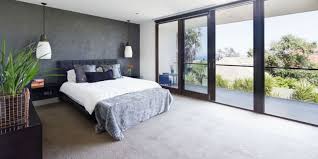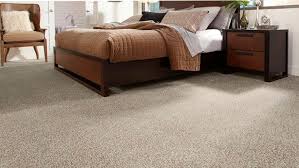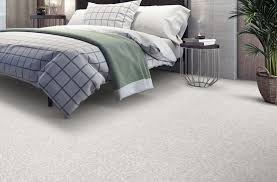What type of carpet is best for bedrooms?
When it comes to the bedroom, most homeowners are looking for luxury. From a soft mattress to stylish décor, your room should be the part of the house you can’t wait to unwind at the end of the day. When thinking about adding more luxury to your bedroom, don’t forget about the type of flooring you have!
Most of us don’t want to wake up and step on a cold floor. That’s why carpet is such a popular choice for bedrooms. It adds warmth and elegance to the room easily. If you’re thinking about installing carpet in your bedroom, here are a few popular choices.
Choosing Carpet For Your Bedroom
From the comfort of soft fabric beneath your feet to the extra warmth and quiet carpet can bring, it’s no wonder more and more homeowners are adding this to their bedroom. If you’re considering adding carpet to your bedroom, you will find that there are many styles and choices you have to make. Here’s what to consider when choosing carpet for your bedroom:
- Budget
- Material
- Carpet Pile & Height
- Color

The Best Carpet for Bedrooms
Having frigid feet as you step out of bed isn’t a great way to start off your morning, which is one reason why carpeting is a top option for bedrooms in homes today. Finding the right type of carpet for your bedroom is easier than you think as long as you follow a few quick tips.
Consider your style
The style of your bedroom can differ considerably from the design or vibe in other parts of your home. Before you can think about what type of carpet is best for bedrooms, you have to consider your tastes to ensure your new flooring won’t clash with the rest of your decor.
With a traditional bedroom, you wouldn’t want anything too bold, but if your bedroom is a mix of styles with an eclectic vibe, your options are unlimited when it comes to carpeting. It’s also important to remember that up to half of your carpet can be hidden in the bedroom, depending on the size of the room, your bed and other furniture. If it’s a small bedroom with a king-sized bed, the style may not matter nearly as much as the feel.
The Pile
Whenever you hear a manufacturer discuss “pile,” they are referring to height or density. That can have a great deal to do with how comfy your new carpet is underfoot. Pile height lets you know just how high those fibers are, and doesn’t include the backing. High pile carpet will feel good beneath your feet but is prone to crushing with heavy foot traffic.
Pile density tells you how dense the fibers in a carpet are. Thicker carpets will hold up better over time, and it’s a critical specification to keep in mind if you want carpet built to last. A low pile carpet is perfect for living rooms and areas that take a beating, but not as important in bedrooms for obvious reasons. Overall, pile is very important, but not as crucial as our next two areas.
Fiber & Style
The type of fiber you choose can play a part in comfort, but it’s also tied directly to style and price. If you want the softest carpet in your bedroom, look for a plush style. Wool is an ideal choice if it’s within your price range; if not, polyester is your next best bet. Nylon and other fibers aren’t uncomfortable by any means, but they aren’t the softest fibers either.
If plush is a little too much for your tastes, a good cut pile carpet is a nice alternative. They are comfy just like shag carpeting, but loop style carpets aren’t as cushy beneath your feet. Sisal will look good in your bedroom or den, but it’s just not as comfortable as plush, shag, or cut pile carpeting made from wool or polyester.

The Green Factor
Buying eco-friendly flooring is never a bad idea, but there is also a hidden benefit to going green with hardwood, vinyl, or carpeting. It ensures you have good indoor air quality as well. For decades, the flooring industry was plagued by issues with off-gassing and concerns over VOCs, but those concerns are a thing of the past if you keep an eye out for a few key features.
Look for carpet that carries Green Label Plus certification or has met similar standards when installing carpeting in your bedroom. It’s essential to have “safe” carpet in any room, but as most people sleep 7 to 8 hours in their bedrooms every night, indoor air quality is critical for that room. Potential causes for VOC in carpeting include the backing layer as well as fibers themselves unless you purchase wool carpet for your bedroom.

Pros and Cons of Bedroom Carpeting
Your bedroom flooring is important. It is the last thing that your feet will touch before you slip from your shoes and climb into bed at night, and it is the first thing they will feel when you wake and leave your bed each morning. Because of this, few flooring materials are more suited to the bedroom than carpet. It is soft, plush, warm underfoot, and soothing to the touch.
Pros
- Sound dampening: One of the benefits of having carpet installed in a bedroom is that it can insulate the space against unwanted ambient noise. The thicker the carpet, the less sound will be transmitted from downstairs, up into the serenity of your bedroom setting.
- Soft: Your bedroom floor is going to be the first thing your bare feet touch each morning and the last thing they touch before slipping from shoes and stepping into bed each night. Carpet has a soft, cushioned feel that makes it very soothing in bedroom applications.
- Warm: One of the worst feelings is slipping from a warm bed on a cold winter morning and having your feet instantly freeze on a chill flooring application. With carpet, you never have to worry about that. Bedroom carpeting is always warm and soft, no matter the weather.
- Maintenance: Aside from dealing with stains, the only regular maintenance that carpet needs is regular vacuuming.
Cons
- Replacement: In a low traffic space such as the bedroom a carpet can last for years. However eventually, it is going to start showing signs of wear and tear, requiring you to update the material.
- Stains: Depending on the type of carpet, you may have to worry about a variety of stains occurring from dirt, colored liquids, and other agents. There are a variety of methods for removing each type of stain, but the most important thing is to wipe up the agent immediately and begin to treat it as soon as possible. Depending on the speed of your efforts the stain may leave residual color in the carpet.
- Snags: In the case of loop pile carpets you may have to deal with snags that can if left untreated, lead to the carpet starting to unravel.
- Cats: In some cases, people will find that cats react to carpeting as if it were a giant cat toy stretched out across the floor of the bedroom. This can often be curbed with a little discipline but may result in wear and tear until your pet is trained.